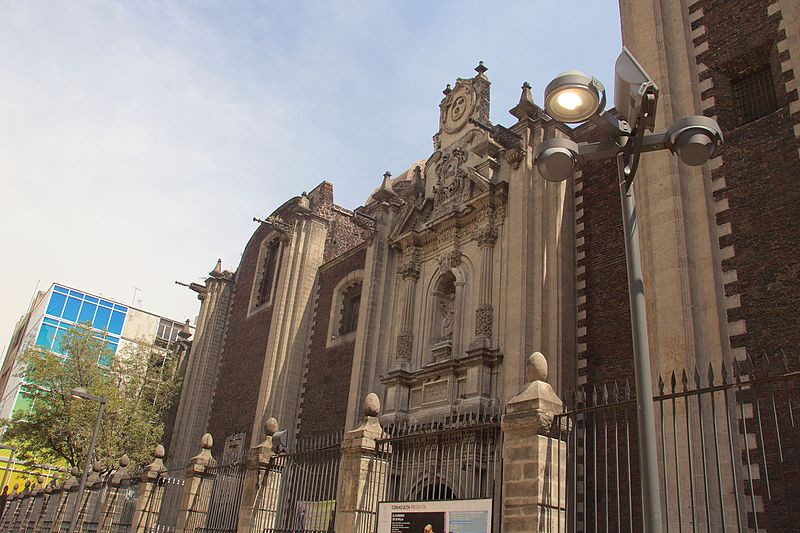
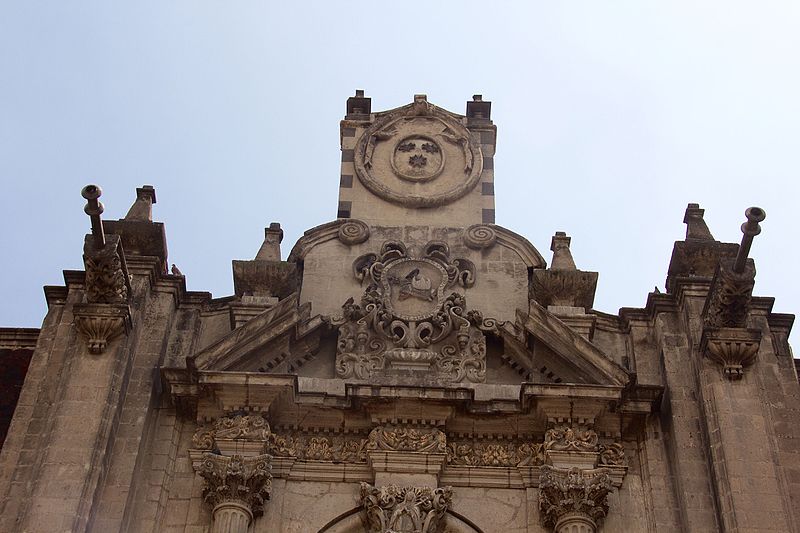
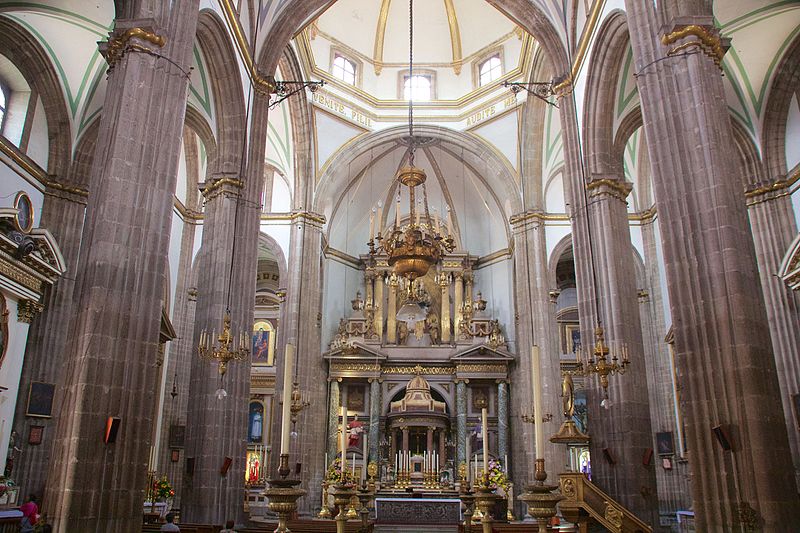

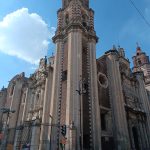 The Jesuits arrived in Mexico City at the end of the 16thcentury. They established a house for the professed of the fourth vow on Plateros Street (today's Avenida Madero). It's been called "La Profesa" since that time.
The architectural complex had two main courtyards and a service courtyard, lodging, chapels, a kitchen and other quarters. Everything was abandoned with the expulsion of the Society of Jesus from the entire Spanish dominion in 1767. The temple was rebuilt by Pedro de Arrieta between 1710 and 1714. It had a splendid Baroque interior with altarpieces and a great collection of works of art. By 1803 the temple and the house were in the hands of the Oratorio de San Felipe Neri of Mexico. The Philippine Fathers then commissioned Manuel Tolsá to redecorate the church. It currently has one of the best neoclassical interiors in the capital, with fine altarpieces and extensive decorations.
Since 1973 the Pinacoteca de La Profesa, a collection of more than 600 17-19th century paintings by Novo-Hispanic artists has been maintained inside. With the 2017 earthquake it was damaged and remains closed. Artists like Rodríguez Juárez, the Correa, and the Echave, and workshops such as those of Cristóbal de Villalpando, Miguel Cabrera, José de Alcíbar, and Antonio de Torres all painted for La Profesa.
The Jesuits arrived in Mexico City at the end of the 16thcentury. They established a house for the professed of the fourth vow on Plateros Street (today's Avenida Madero). It's been called "La Profesa" since that time.
The architectural complex had two main courtyards and a service courtyard, lodging, chapels, a kitchen and other quarters. Everything was abandoned with the expulsion of the Society of Jesus from the entire Spanish dominion in 1767. The temple was rebuilt by Pedro de Arrieta between 1710 and 1714. It had a splendid Baroque interior with altarpieces and a great collection of works of art. By 1803 the temple and the house were in the hands of the Oratorio de San Felipe Neri of Mexico. The Philippine Fathers then commissioned Manuel Tolsá to redecorate the church. It currently has one of the best neoclassical interiors in the capital, with fine altarpieces and extensive decorations.
Since 1973 the Pinacoteca de La Profesa, a collection of more than 600 17-19th century paintings by Novo-Hispanic artists has been maintained inside. With the 2017 earthquake it was damaged and remains closed. Artists like Rodríguez Juárez, the Correa, and the Echave, and workshops such as those of Cristóbal de Villalpando, Miguel Cabrera, José de Alcíbar, and Antonio de Torres all painted for La Profesa.
Heart of México Walking Route: Alameda Central - Av. Madero
< < Palacio de Iturbide| Museo del Estanquillo > >
Proyecto “Corredor de Cultura Digital”.
Nombre de la investigación: Investigación Centro Histórico, Monumentos, Edificios y Puntos de Interés (2023)
Dirección de investigación y diseño de Rutas: Acércate al Centro A.C. Guadalupe Gómez Collada
Coordinación e investigación histórica: Fideicomiso del Centro histórico Dir. Maestra Loredana Montes
 +52 (55) 5521 8362
+52 (55) 5521 8362

相近 0.03 kms.
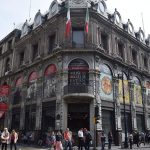
相近 0.05 kms.

相近 0.08 kms.

Among the strongest places to see historical and colonial period art works . . .

Bellas Artes has long been an iconic symbol of Mexico City's culture and performing arts.
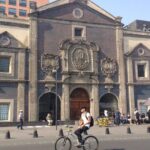
One of Pedro de Arrieta's most lasting contributions to the look and feel of the City.
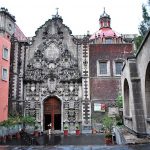
One of the oldest places on today's calle Madero, the temple is only accessible through a remaining side chapel.

One of the most eclectic of museums, at home in one of the most dynamic of late 19th century buildings.